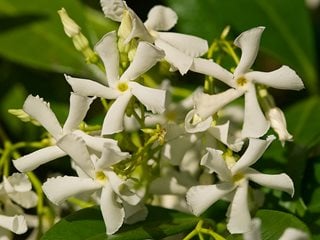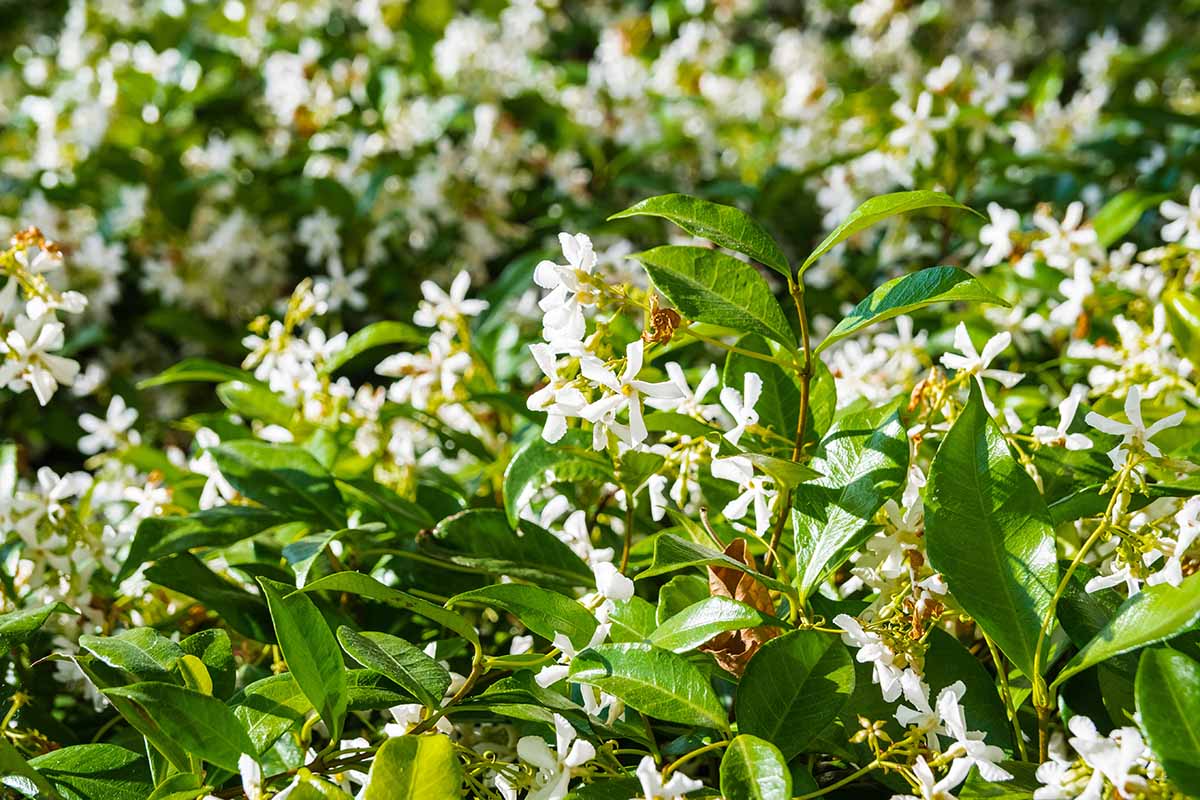Understanding the Watering Needs of Star Jasmine
Proper watering is crucial for the health and beauty of star jasmine plants. Overwatering can lead to root rot, yellowing leaves, and pest infestations, while underwatering can cause leaf drop, reduced growth, and increased susceptibility to disease. To determine how often to water star jasmine, it’s essential to consider factors like climate, soil type, and pot size.
In general, star jasmine plants prefer well-draining soil and partial shade to full sun, depending on the climate. In tropical and subtropical regions, star jasmine may require more frequent watering due to high temperatures and humidity. In temperate regions, watering can be less frequent, but still regular, to ensure the soil remains moist but not waterlogged.
The pot size also plays a significant role in determining the watering needs of star jasmine. Smaller pots dry out faster than larger ones, so more frequent watering may be necessary. Conversely, larger pots may require less frequent watering, but it’s essential to check the soil moisture regularly to avoid overwatering.
Soil type is another critical factor in determining the watering needs of star jasmine. Well-draining potting mixes can help prevent waterlogged soil, while heavy clay soils may require less frequent watering. By understanding these factors, you can develop a watering schedule that meets the unique needs of your star jasmine plant.
When it comes to how often to water star jasmine, a general rule of thumb is to water when the top 1-2 inches of soil feel dry to the touch. However, this may vary depending on the specific conditions of your plant. By monitoring the soil moisture and adjusting your watering schedule accordingly, you can ensure your star jasmine plant receives the right amount of water to thrive.
How to Check the Moisture Levels of Your Star Jasmine Soil
Checking the moisture levels of your star jasmine soil is crucial to determine how often to water star jasmine. There are several methods to check the soil moisture, including the finger test, moisture meter, and observing the plant’s signs of water stress.
The finger test is a simple and effective way to check the soil moisture. Insert your finger into the soil up to the first knuckle, and if the soil feels dry, it’s time to water. If the soil feels moist, wait another day or two before checking again. This method is especially useful for small pots and containers.
A moisture meter is a handy tool that measures the soil moisture levels. These meters are available at most gardening stores and can provide an accurate reading of the soil moisture. Simply insert the probe into the soil, and the meter will give you a reading of the moisture levels.
Observing the plant’s signs of water stress is another way to determine if it’s time to water. Star jasmine plants will often droop or wilt when they need water. Check the leaves for signs of water stress, such as yellowing or curling. If you notice any of these signs, it’s time to water your star jasmine plant.
Regularly checking the soil moisture levels will help you avoid overwatering, which can be detrimental to your star jasmine plant. By using one or a combination of these methods, you can ensure your plant receives the right amount of water to thrive.
It’s also important to note that the frequency of checking the soil moisture levels will depend on the climate and weather conditions. In hot and dry climates, you may need to check the soil moisture levels daily, while in cooler and more humid climates, you may only need to check every few days.
By incorporating these methods into your watering routine, you’ll be able to determine how often to water star jasmine and provide your plant with the right amount of moisture to thrive.
The Best Watering Schedule for Star Jasmine in Different Climates
Star jasmine plants require different watering schedules depending on the climate they are grown in. In tropical climates, star jasmine plants may need to be watered every 2-3 days, while in subtropical climates, they may need to be watered every 3-4 days. In temperate climates, star jasmine plants may only need to be watered every 4-5 days.
It’s essential to adjust the watering schedule based on weather conditions, such as during periods of drought or heavy rainfall. During droughts, star jasmine plants may need to be watered more frequently to prevent water stress. On the other hand, during heavy rainfall, it’s best to reduce the frequency of watering to prevent overwatering.
In tropical climates, the high temperatures and humidity can cause star jasmine plants to dry out quickly. To prevent this, it’s best to water them in the morning, so the plants have the entire day to absorb the water. In subtropical climates, the temperatures are generally milder, and the plants may not need to be watered as frequently.
In temperate climates, the temperatures can fluctuate significantly, and the plants may need to be watered more frequently during the hot summer months. During the cooler winter months, the plants may only need to be watered every 7-10 days.
It’s also important to note that the watering schedule may need to be adjusted based on the specific variety of star jasmine plant. Some varieties may be more drought-tolerant than others, and may require less frequent watering.
By understanding the specific watering needs of star jasmine plants in different climates, you can ensure that your plants receive the right amount of water to thrive. Remember to adjust the watering schedule based on weather conditions and the specific variety of star jasmine plant you are growing.
When it comes to how often to water star jasmine, it’s essential to monitor the plants’ response to watering and adjust the schedule accordingly. If the plants are showing signs of water stress, such as yellowing leaves or droopy stems, it may be necessary to increase the frequency of watering.
Watering Star Jasmine in Containers: Special Considerations
Star jasmine plants grown in containers require special consideration when it comes to watering. The key to successful container gardening is to use a well-draining potting mix that will prevent waterlogged soil. A mix that contains perlite, vermiculite, or sand will help to improve drainage and prevent root rot.
When watering star jasmine in containers, it’s essential to avoid getting water on the leaves or crown of the plant. This can cause the plant to become susceptible to disease and pests. Instead, water at the soil level, making sure to moisten the soil thoroughly.
The frequency of watering will depend on the size of the container, the climate, and the time of year. In general, star jasmine plants in containers will need to be watered more frequently than those in the ground. This is because the soil in containers can dry out quickly, especially in hot weather.
A good rule of thumb is to water star jasmine in containers when the top 1-2 inches of soil feel dry to the touch. This will help to prevent overwatering, which can be detrimental to the plant. It’s also essential to monitor the plant’s response to watering and adjust the frequency accordingly.
When it comes to how often to water star jasmine in containers, it’s essential to consider the specific needs of the plant. In general, star jasmine plants in containers will need to be watered every 2-3 days during the active growing season. During the dormant season, they may only need to be watered every 7-10 days.
By following these tips and guidelines, you can ensure that your star jasmine plant in a container receives the right amount of water to thrive. Remember to monitor the plant’s response to watering and adjust the frequency accordingly to prevent overwatering and underwatering.
How to Avoid Overwatering Your Star Jasmine
Overwatering is one of the most common mistakes that can be made when caring for star jasmine plants. It can lead to a range of problems, including yellowing leaves, root rot, and pest infestations. To avoid overwatering, it’s essential to understand the signs of overwatering and take steps to prevent it.
One of the most common signs of overwatering is yellowing leaves. If the leaves of your star jasmine plant are turning yellow, it may be a sign that the plant is receiving too much water. Another sign of overwatering is root rot, which can cause the roots of the plant to become soft and mushy.
To prevent overwatering, it’s essential to use a drip irrigation system. This type of system delivers water directly to the roots of the plant, reducing the risk of overwatering. It’s also important to avoid getting water on the leaves of the plant, as this can cause the leaves to become waterlogged and increase the risk of disease.
Another way to prevent overwatering is to check the soil moisture regularly. This can be done by inserting your finger into the soil up to the first knuckle. If the soil feels dry, it’s time to water. If the soil feels moist, wait another day or two before checking again.
It’s also important to monitor the plant’s response to watering. If the plant is showing signs of overwatering, such as yellowing leaves or root rot, it’s essential to adjust the watering schedule accordingly. This may involve reducing the frequency of watering or using a different type of irrigation system.
By taking these steps, you can help to prevent overwatering and ensure that your star jasmine plant receives the right amount of water to thrive. Remember, it’s always better to err on the side of caution when it comes to watering, as overwatering can be detrimental to the health of the plant.
When it comes to how often to water star jasmine, it’s essential to consider the specific needs of the plant. In general, star jasmine plants prefer to be watered when the top 1-2 inches of soil feel dry to the touch. However, this may vary depending on the climate, soil type, and pot size.
Watering Star Jasmine During Different Growth Stages
Star jasmine plants have different watering needs during different growth stages. Understanding these needs is crucial to provide the right amount of water for optimal growth and health.
During the active growing season, star jasmine plants require more water to support their rapid growth. This is usually during the spring and summer months when the plant is producing new leaves and stems. During this stage, it’s essential to water the plant regularly, but make sure not to overwater.
During the dormant season, star jasmine plants require less water. This is usually during the fall and winter months when the plant is not actively growing. During this stage, it’s essential to reduce the frequency of watering to prevent root rot and other problems.
During the flowering period, star jasmine plants require a bit more water to support the production of flowers. This is usually during the late spring and early summer months when the plant is producing flowers. During this stage, it’s essential to water the plant regularly, but make sure not to overwater.
It’s also important to note that the watering needs of star jasmine plants can vary depending on the climate and weather conditions. In hot and dry climates, the plant may require more water to prevent water stress. In cool and wet climates, the plant may require less water to prevent root rot.
By understanding the different watering needs of star jasmine plants during different growth stages, you can provide the right amount of water for optimal growth and health. Remember to monitor the plant’s response to watering and adjust the frequency accordingly.
When it comes to how often to water star jasmine, it’s essential to consider the specific needs of the plant during different growth stages. In general, star jasmine plants prefer to be watered when the top 1-2 inches of soil feel dry to the touch. However, this may vary depending on the climate, soil type, and pot size.
Troubleshooting Common Watering Issues with Star Jasmine
Despite proper watering, star jasmine plants can still experience common watering issues. In this section, we will address some of the most common issues and provide solutions and advice on how to resolve them.
Leaf drop is a common issue with star jasmine plants, especially during the active growing season. This can be caused by overwatering, underwatering, or sudden changes in temperature or humidity. To resolve this issue, check the soil moisture regularly and adjust the watering schedule accordingly. Also, ensure that the plant is receiving enough light and nutrients.
Leaf scorch is another common issue with star jasmine plants, especially during the hot summer months. This can be caused by overwatering, underwatering, or exposure to direct sunlight. To resolve this issue, check the soil moisture regularly and adjust the watering schedule accordingly. Also, provide shade for the plant during the hottest part of the day.
Root bound conditions can also occur with star jasmine plants, especially when they are grown in containers. This can be caused by the plant outgrowing its container or by the soil becoming waterlogged. To resolve this issue, check the soil moisture regularly and adjust the watering schedule accordingly. Also, consider repotting the plant into a larger container with fresh, well-draining soil.
By troubleshooting common watering issues with star jasmine plants, you can ensure that your plant receives the right amount of water and nutrients to thrive. Remember to monitor the plant’s response to watering and adjust the frequency accordingly.
When it comes to how often to water star jasmine, it’s essential to consider the specific needs of the plant. In general, star jasmine plants prefer to be watered when the top 1-2 inches of soil feel dry to the touch. However, this may vary depending on the climate, soil type, and pot size.
Conclusion: Watering Star Jasmine for Optimal Health and Beauty
Proper watering is essential for the health and beauty of star jasmine plants. By understanding the unique watering needs of star jasmine, you can provide the right amount of water to support optimal growth and flowering.
In this article, we have discussed the importance of proper watering for star jasmine plants, including the consequences of overwatering and underwatering. We have also provided tips on how to check the moisture levels of the soil, including the finger test, moisture meter, and observing the plant’s signs of water stress.
We have also discussed the best watering schedule for star jasmine plants in different climates, including tropical, subtropical, and temperate regions. Additionally, we have addressed common watering issues with star jasmine plants, including leaf drop, leaf scorch, and root bound conditions.
By following the tips and guidelines outlined in this article, you can ensure that your star jasmine plant receives the right amount of water to thrive. Remember to monitor the plant’s response to watering and adjust the frequency accordingly.
When it comes to how often to water star jasmine, it’s essential to consider the specific needs of the plant. In general, star jasmine plants prefer to be watered when the top 1-2 inches of soil feel dry to the touch. However, this may vary depending on the climate, soil type, and pot size.
By providing the right amount of water, you can help your star jasmine plant to grow and thrive, producing beautiful flowers and a lush, green foliage. With proper care and attention, your star jasmine plant can become a stunning addition to your garden or indoor space.


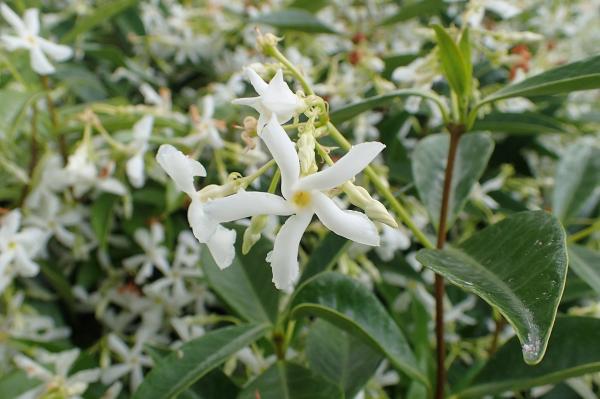
:max_bytes(150000):strip_icc()/star-jasmine-growing-profile-3269239-02-a904688886e14701b7c6bf8bed568a0d.jpg)
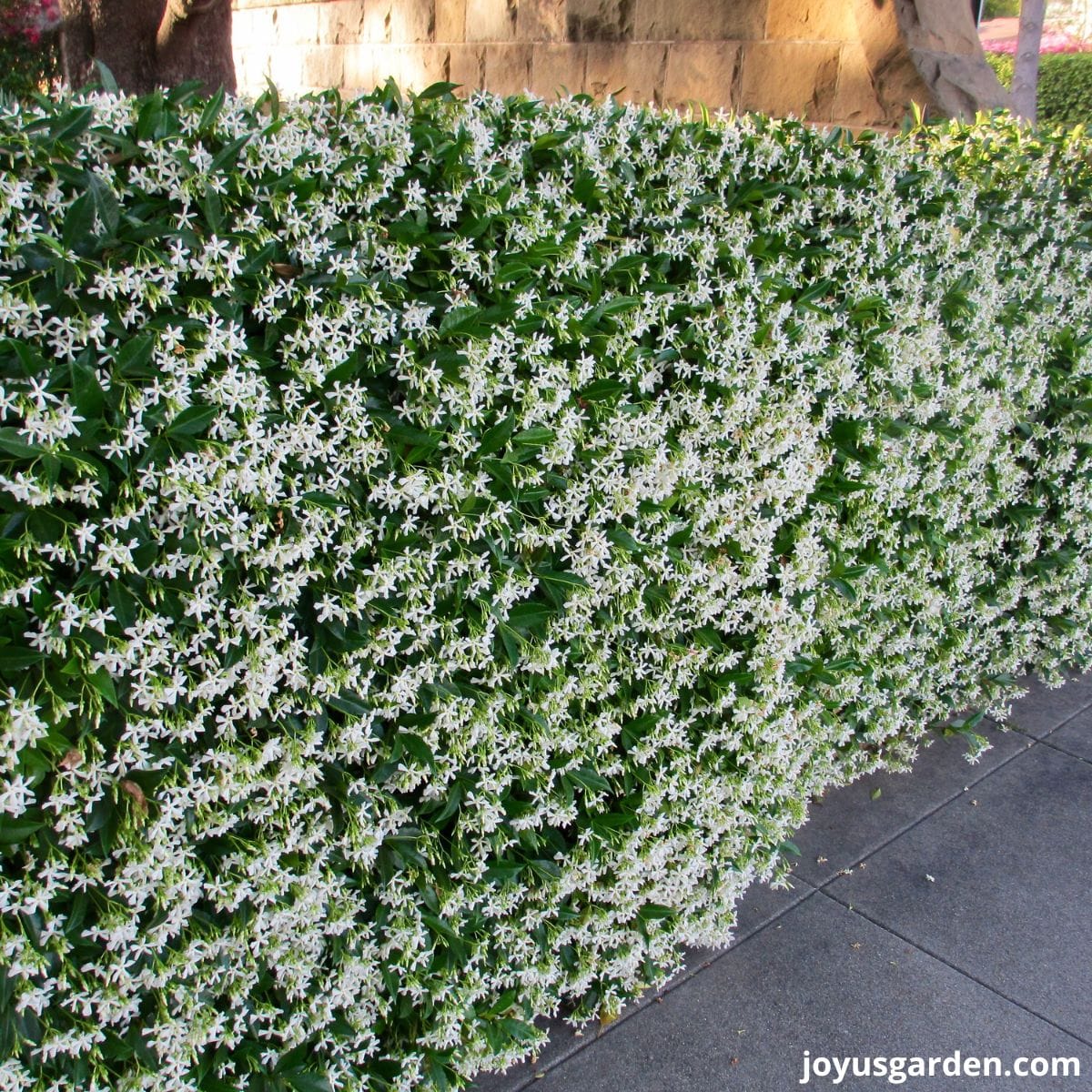
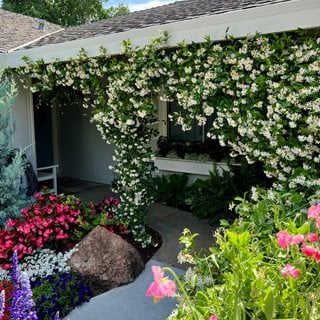
:max_bytes(150000):strip_icc()/star-jasmine-growing-profile-3269239-hero-8d86ba3a41c94b73badf36f12e37b7f6.jpg)
